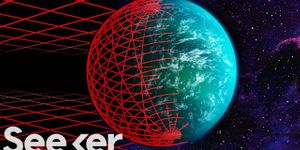Cosmic Signal from the First Stars of Universe
According to the Big Bang theory, astronomers believed that the entire universe was in the dark age (meaning no stars, no light) until the first batch of stars formed, an era known the "cosmic dawn". It was about 180 million years after the Big Bang.
Now cosmologists have finally identified a signal left behind by the first stars as they first lit up the universe.
Following the big bang, hydrogen was the first atom that ever comes into existence. The universe, however, was simply filled with cold clumps of hydrogen gas awash with radiation, known as the Cosmic Microwave Background (CMB).
CMB was first predicted in 1948 by cosmologists Ralph Alpher and Robert Herman and later discovered by accident by radio astronomers Arno Penzias and Robert Wilson in 1964. The duo did the first-ever measurement of CMB using a radiometer that was intended for the Bell Telephone Lab's astronomy and satellite communication experiments. Penzias and Wilson were awarded 1978 Nobel Prize in Physics for their works in CMB.
By its nature, CMB is a remnant electromagnetic radiation from an early stage of the universe, and is still lingering throughout the entire universe today. It provides astronomers a perfect time log that allows them to look into the cosmic history.
Scientists have predicted that as the stellar pioneers lit up the surrounding hydrogen gas, causing them to absorb CMB radiation of a specific wavelength. Although this, in theory, can be detected, it took scientists took over a decade make the final discovery.
One major challenge is that scientists would have to sift through noisy radio waves surrounding our planet, solar system and galaxy to find a faint, dip signal from the deep past. As the universe constantly expands, the signal of interest is thought to be “red-shifted”, meaning that its signature wavelength got stretched over the time. Thus it would be crucial to predict when the first stars switched on precisely.
Not only did the researchers manage to block out 99.99% of the contaminating radio noise, but they also stroke home by finding the right wavelength of CMB radiation.
No wonder some considered the observations into the cosmic past as a “revolutionary” step that could lead to more discovery about the early universe.
Source: Nature Video via Youtube










